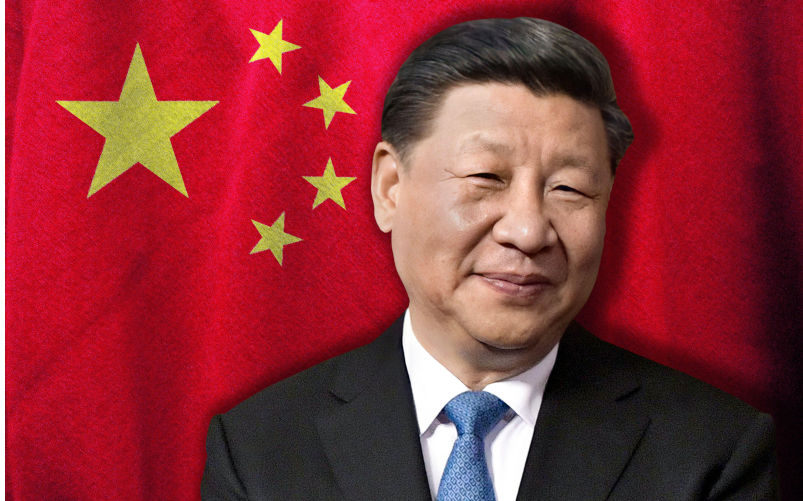US President Donald Trump’s decision to first place, and then delay, a 25% tariff on goods from neighbouring Canada and Mexico, along with his hitting China with an additional 10% tariff increase has made quite a splash in the news.
The pretence is that the three nations are responsible for both the inflow of “illegal immigration” and drugs, mainly fentanyl, into the US, with the official White House announcement even asserting that the Mexican Government has an “alliance” with drug trafficking organisations.
China had added to their above sins, those which have become “usual”, “intellectual property theft, forced technology transfer, and other unreasonable behaviour”.
Given that these three countries are by far the largest source of US imports, US customers are unlikely to be pleased when they find consumer goods prices soon rising substantially.
China has responded to the Trump tariff action by raising tariffs of its own against US goods entering China. The action is asymmetrical, however, with Capital Economics estimating that China’s additional tariffs will apply to about $US20 billion of goods, compared with the $US450 billion levied on Chinese goods. Seemingly the Chinese action is meant more as a warning shot.
It was the first Trump administration which initiated the recourse to tariffs, supposedly to protect US industry, by levying imposts on thousands of products valued at approximately $380 billion in 2018 and 2019. The succeeding Biden administration retained most of these tariffs, before announcing further tariff hikes on an additional $18 billion of Chinese goods in May 2024.
The actions of the Trump administration fly squarely in the face of the WTO agreements, and one would expect an appeal to that body, except the WTO no longer has an Appellate Body as the final arbiter, the US, blocked new judges being appointed.
While it can only be conjecture as to how Mexico and Canada will respond to these tariffs, as neither would have expected such from their neighbour, China has long been prepared.
First, rather than hearkening back to some idealised age of manufacturing, China has moved past them into the age of information technology and cutting edge innovation. Dominating in EV production, energy renewables, and now rapidly moving to the front in computer technology, China is choosing instead to produce things for which the world is hungry.
Yet, it is not leaving itself entirely at the mercy of that world. It has progressively reoriented its economy away from being export directed, to being one more stimulated by its own domestic consumption, meaning it is far less likely to be buffeted by external forces, particularly those capriciously aimed at hobbling its economy.
Still, China, as the world’s largest trading nation, is obviously heavily involved in the global economy,
The Trade Data Monitor notes in 2024, China recorded the biggest global trade surplus in economic history at $US992 billion, a 5.9% increase from 2023, concluding, “China’s trade surplus is a colossus, representing a history-making investment by Western companies and countries this century into making goods in China”.
One would surmise that these “Western companies and countries” are not likely to view very favourably the imposition of Trump’s further tariffs. Elon Musk, massively invested in China and a huge backer of Trump ($US 250 million in the recent US election), comes particularly to mind.
Rather than resting on its trade success, China, seeing the approaching headwinds, has diversified its export markets, away from the US and its Western allies, to the Global South, with exports to ASEAN and BRICS+ nations now almost matching those to the US and EU.
In absolute terms, Chinese exports to the US rose rapidly for 40 years until 2015, but have since plateaued and are now falling. In relative terms, the fall has been precipitous. In 2018, the US was taking 22% of China’s exports but by 2023, that had plunged to 14%.
From its history, Chinese leadership is well aware of the short-sightedness of turning inward with protectionist policies such as tariffs. In 1434, the Ming Court, following a change of emperor, decided to discontinue the journeys of its great fleet of massive ships (some 4-5 times larger than the Portuguese caravels which would follow a century later), which, under the command of Admiral Zheng He, had reached as far as Africa and the Middle East, choosing to turn inward instead, the ships destroyed in a great bonfire. China over the following centuries became progressively enfeebled, until it had finally to endure a “century of humiliation” under mainly Western powers.
China has also taken other steps to secure the safety of its trade, fortressing the South China Sea in response to the US “first island chain” of “defence” (more so aggression), securing passage through the erstwhile choke point of the Sunda and Malacca Straits, by advocating for both Indonesia and Malaysia to become members of BRICS+, the former a full member. It has also secured access through Pakistan to the Indian Ocean through the China Pakistan Economic Corridor, one of the prestige projects of the Belt and Road Initiative, while also developing extensive rail transport through Eurasia.
In light of all this, Trump’s actions on tariffs remind one of a shooting party, all taking aim while standing in a circle.
John Queripel is a Newcastle-based historian, theologian, social commentator and published author of four books. His latest book, ‘In Wisdom and in Passion: Comparing and Contrasting Buddha and Christ’ has just been released. His blog may be found at www.johnqueripelblog.com.Substack / https://johnqueripel.substack.com

